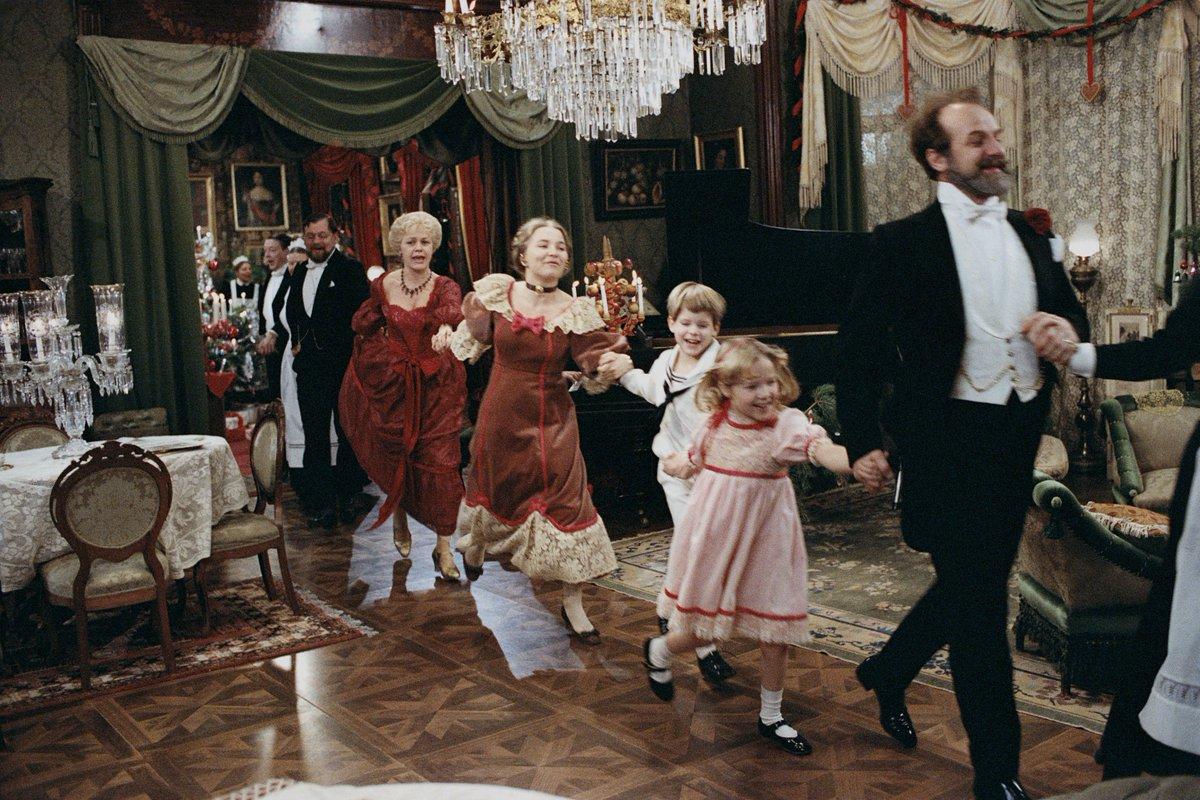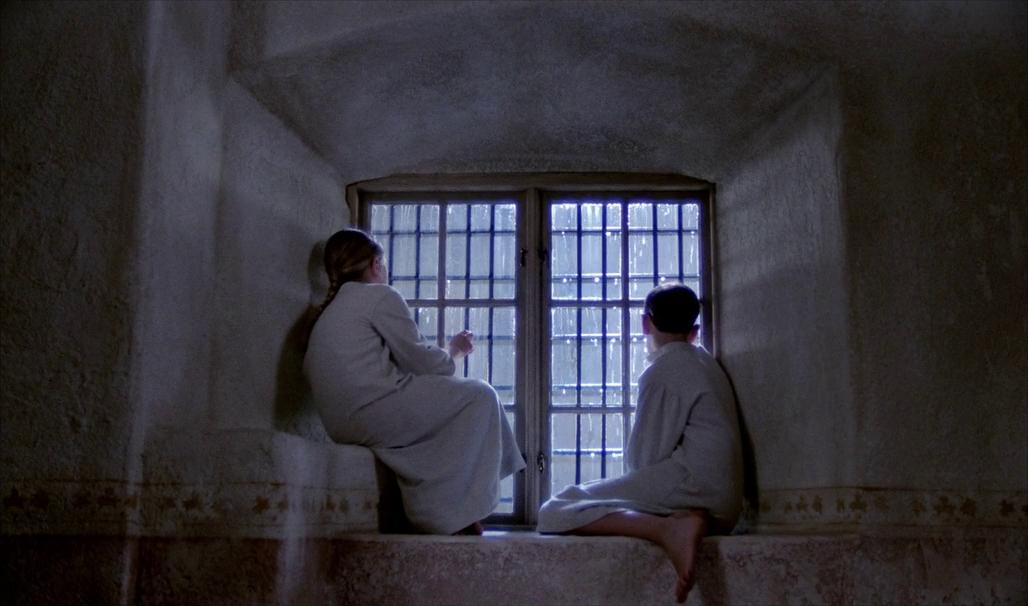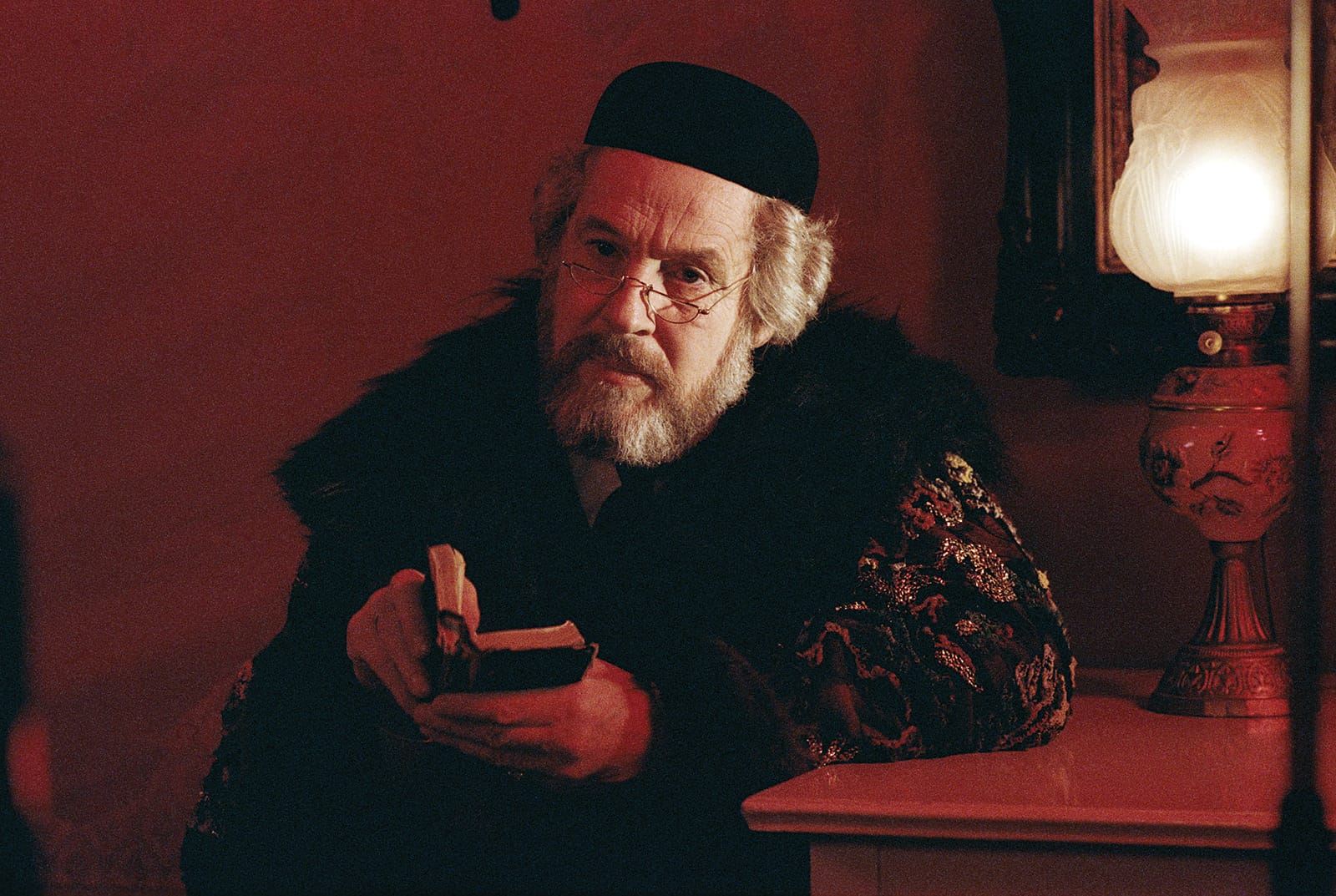Fanny and Alexander
This week's Viewer film essay: on Ingmar Bergman's Fanny and Alexander. What would you like to see more of from the Viewer? Let us know at editors@theviewer.is
Spoilers ahead
Although he would come to identify as an atheist, the Swedish director Ingmar Bergman was fixated on religion his entire life. His father, Erik Bergman, was a Lutheran parish minister who ruled with an iron fist over their devout Christian household, and from a young age, Bergman was fascinated by the church. In his autobiography, he wrote, “I devoted my interest to the church's mysterious world of low arches, thick walls, the smell of eternity, the colored sunlight quivering above the strangest vegetation of medieval paintings and carved figures on ceilings and walls. There was everything that one's imagination could desire—angels, saints, dragons, prophets, devils, humans...” His childhood memories would resurface in his films, which are full of priests, nuns, churches and religious pontification (“The Seventh Seal,” “Through a Glass Darkly” and “Face to Face” all take their titles directly from the Bible).
“Fanny and Alexander” is one of Bergman’s last films. With a formidable five-and-a-half-hour runtime, it is about many things, including childhood, ghosts, family, authority, dreams, reality and punishment, but the film can be read most deeply as a meditation on religion. Using a three-part structure, Bergman presents a dialectical reading of religion, isolating each aspect of it and comparing them against each other.
The film introduces us to the wealthy Ekdahls, theater proprietors in a Swedish town circa 1907, as they gather for Christmas Eve. Their Christmas is fantastically warm and colorful – ornate chandeliers, velvet furniture, and verdant green plants fill every room, with thousands of candles lighting the festivities late into the night. As the Ekdahls toss back more and more glasses of brandy, they begin to dance through the winding corridors of the house, belting out a festive Swedish Christmas song: “Now it’s Yule again, now it’s Yule again, and Yule will last until it’s Easter! That’s not true of course, no that’s not true of course, for in between comes Lent and fasting.”

For the Ekdahls, religion is constituted by a set of shared cultural traditions and nothing more. The words “God” and “Jesus Christ” are nowhere to be found -- religion in this context is essentially a social phenomenon rather than a personal one, a binding agent that holds families and cultures together. It’s a way to unite the old and young under the banner of age-old customs, and an excuse to bring the whole family together a few times per year.
Bergman paints this as a benign form of religion. It plays no serious part in the Ekdahl’s day-to-day lives, but is nonetheless a pleasant background. Ten-year-old Alexander delights at the merriment of the family gathering, the smorgasbord, the mystery of the Christmas tree. He goes to sleep that night feeling like he belongs.
However, this form of religion soon loses footing. When Alexander’s father suddenly dies, his mother Emelie is so heartbroken she feels she cannot go on living unless she radically changes her life. Seeking for a way to cleanse her soul, she meets a devout bishop, Edvard Vergérus. Later, she reflects on why she was so drawn to Edvard: “He spoke to me of another life. A life of demands, of joy in the performance of duty. I’d never heard such words. There seemed to be a light around him when he spoke to me.”
Emelie sees in Edvard the second face of religion – piety. She wants to find meaning not in pleasures like food, sex and dance, but in something higher, something holier. So she marries Edvard and moves into his bare, almost prison-like home. He forces Emilie and her children to leave behind their home, clothes, jewels, furniture, friends, and family. “We should be grateful that we may live in an atmosphere of purity and austerity,” says Edvard. “I want you to come to your new life as if newly born.”
The second face of religion is not easy on Alexander and his sister Fanny. They are permitted no freedom, fun or imagination. Edvard insists that he does love the children, but his love is “strong and harsh” – a love that involves beating them and locking them up in the dark attic when they misbehave. The character is clearly based on Bergman’s father Erik, who would administer similarly cruel punishments to Bergman and his siblings.

Edvard understands that most won’t people understand him, but he doesn’t care. He speaks with rapture of “people who have no needs, who dismiss the world’s luxuries, who allow themselves to be slandered because their conscience is clear before God the Almighty.” He is genuinely committed to his principles, and though his sadistic interpretation of what it means to be pious is presented as straightforwardly unethical, it is a dialectical response to the shallow frivolities of the Ekdahl family’s Christian secularism.
This face of religion cannot last forever either. In the final act of the film, a mysterious family friend of the Ekdahls named Isak Jakobi spirits Fanny and Alexander away to a hidden room in his puppet shop where they can live safe from Edvard’s vicious hand. He is an enigmatic figure in the story, a Kabbalistic Jew who seems to possess actual mystical powers.
Here we have the final face of religion in “Fanny and Alexander”: magic. The antidote to Edvard’s Christian piety is the ancient Jewish magic that Isak harnesses, a religious force neither good nor evil. While living with Isak, Alexander descends to the basement to meet his sibylline nephew Ismael, a character even more powerful and mysterious than Isak. Ismael grips Alexander and telepathically senses that he fantasizes about Edvard dying. “I merge into you, my child,” Ismael whispers, and in a scene of unmatched enchantment and horror in all of cinema, he channels Alexander’s morbid fantasy into reality – at that precise moment, Edvard dies in a house fire. Magic beats out piety. The only way to transcend Edvard’s strict Christian ethics (and to end his domination over our heroes) is with an even more potent religious wellspring, a supernatural energy that radiates from the yellowing pages of the Kabbalah that Isak reads to the children as a bedtime story.

Bergman intentionally chose Judaism, and not, for example, Christian esotericism, to represent this third stage of religion. In 1907 Jews lived on the fringes of Swedish society, often working as moneylenders. Their relationship with most Christians is revealed when Edvard suddenly attacks Isak, screaming “Filthy Jewish Swine! You thought you could cheat me! You’ll regret this, you repulsive, hook-nosed bastard!” Jewish mysticism was the only kind of religious magic that would have been present but still strange and forbidden in a small Swedish town in the early 1900s.
After these unearthly forces have vanquished Edvard’s rule, Fanny and Alexander return to the Ekdahls, and the film ends on a festive gathering quite similar to the Christmas celebration at the beginning. They are once again united by the same benign, secular Swedish Christianity that they have been for generations. In the last scene of the film, Alexander is walking down the corridors of the house at night and is suddenly accosted by the angry ghost of Edvard. Standing menacingly in the doorway, Edvard says, “You can’t escape me.” This scene implies that the specter of strict religious conformism still looms in the background of secular life. Despite the similarity between the beginning and the ending celebrations, Alexander now understands the deeper and darker sides of religion that underscore the festive pageantry of the Ekdahls.
The party song I mentioned earlier outlines the three stages of “Fanny and Alexander”: First comes Christmas, a holiday of tradition. Then comes Lent, a holiday of rules, ethics, and personal deprivation. Finally, Easter, based around a supernatural resurrection, is the holiday of magic. These three stages are each, in their own way, essential to the religious life, and the comforting secularism that the heroes return to at the end is richer because it has been re-contextualized by the other two.
Max von Sydow, one of Bergman’s longest collaborators, said that in his later years Bergman confessed that his faith in the afterlife had been restored. This makes it quite hard to understand what his views on religion actually were. But it’s clear that until his death, Bergman maintained an obsession with the ways that God comes into our lives, and “Fanny and Alexander” is his attempt to understand religion as a mortal institution, a multifaceted mode of human interaction. It’s a film about – in Bergman’s words – angels, saints, dragons, prophets, devils, and most of all, humans.
Previous film essays from the Viewer: Abbas Kiarostami's Taste of Cherry; Martin McDonagh’s In Bruges.
The Viewer is brought to you by the Browser, the curation newsletter for writing of lasting value. The Browser is to writing what The Viewer is to video. Try it for free: https://thebrowser.com/c/the-viewer
Comments? Suggestions? Write to us anytime at editors@theviewer.is
Editor: Abe Callard
Publisher: Uri Bram [uri@theviewer.is]